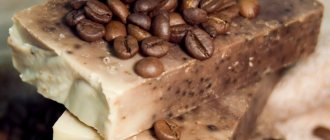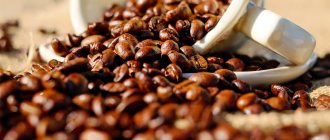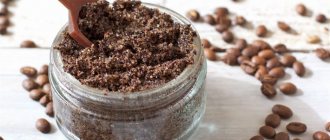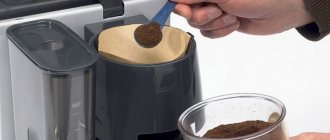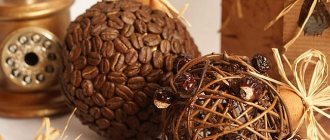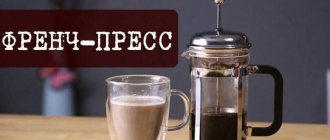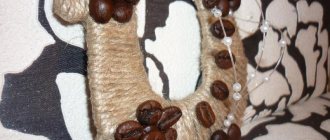Making soap at home is a fun and rewarding activity. This is an individual approach to skin care, an original gift, and a type of income. Handmade soap contains natural ingredients and combines cleansing procedures with skin care.
Beautiful soap can be a wonderful gift
Making soap with your own hands is not difficult, however, as with everything, there are some subtleties. In order to avoid disappointment, a novice soap maker should delve into some of the nuances of the process in advance and study different options for preparing detergent.
Materials for DIY soap making
The first thing a novice soap maker should do is become familiar with the ingredients from which soap is made. The correct selection of ingredients will allow you to produce a quality product. Here is its composition:
- soap base;
- dyes;
- flavors and essential oils;
- additives;
- base oils;
- alcohol;
- forms.
Depending on what kind of soap you want to get, the necessary elements are used. To work, you will need plastic spoons, wooden sticks, and rubber gloves.
Soap bases
Ready-made soap base is a semi-finished product with which you can create exclusive soap without much effort. It contains alkali, vegetable oils and a little water. The factory base cannot be called a 100% natural product, because additives are present in it, but in much smaller quantities than in a store-bought product.
Soap base “DA soap crystal”
The trade offers creamy, white and transparent bases. White has a dense consistency, hardens quickly and mutes the colors. In a transparent base, the colors are vibrant. Creamy is used to produce scrub soap, cream soap, and cake-shaped soap.
When making your own soap, the base can be made from scratch, and it will be a completely natural product. Beginning soap makers can use baby soap instead of the base, but in this case, you must understand, the final product will always be matte.
Dyes
Dyes are divided into 3 types: natural, food, pigments. Natural ones include coffee, sea buckthorn oil, vegetable and fruit juices.
Dyes for making soap
Food dyes do not cloud the base, but are able to migrate - move into adjacent layers. Dry food colorings are concentrated and should be diluted in water beforehand.
Cosmetic pigments come in a huge palette of colors, but they cloud the base. They are liquid and dry. Pearlescent pigments are introduced into the soap and used for exterior decoration.
Flavors
Soap flavoring is carried out using essential oils, fragrances (ready-made flavorings), food flavorings.
Essential oils have a positive effect not only on the skin, but also on the entire body as a whole. However, they should be used with caution - some of them can cause allergic reactions.
Natural essential oils “Marislavna”: red tangerine, tea tree, star anise, rosewood, angustifolia lavender
Essential oils are volatile compounds. In this regard, you need to be prepared for the fact that the aroma will disappear after a few weeks. Sealed packaging will help slow down the process.
High temperatures increase the volatility of oils, so it is advisable to add this type of flavoring to the soap mass at the end of the process.
Cosmetic fragrances delight you with a wealth of choice and give the finished product a lasting aroma. Floral, fruity, compositional, feminine and masculine - everyone will find their own scent.
Flavors (fragrances) for soap with different scents: jasmine, nutmeg, vanilla, etc.
One feature should be taken into account - the presence of a certain percentage of vanilla in the selected aroma is fraught with a change in the color of the finished product. To prevent such a nuisance, a special stabilizer (preservative) is used.
Food flavorings are less persistent than fragrances, but their price is lower.
Supplements
Additives significantly improve the quality of soap. Depending on their type, the product acquires the care direction needed for a particular skin, saturates it with minerals and vitamins, and has a scrub effect. Additives give soap an interesting texture and serve as decoration.
Additives in soap making can vary. The main selection criterion is their usefulness
The list of additives is impressive: chocolate, oatmeal, herbs, vegetable and fruit juices, spices, cocoa, mumiyo, egg yolks, dairy products.
Base oils
It can be sunflower oil, olive oil, sea buckthorn oil or coconut oil. Oil is added to soap to achieve a certain effect - moisturizing, nourishing or softening. The amount per 100 g of base is 1-2 teaspoons.
Base oil for soap
Alcohol
96⁰ alcohol is used to process molds before pouring, adhesion of layers and removal of bubbles that form on the surface of the soap mass.
Glycerol
Glycerin is a substance with pronounced moisturizing and softening properties.
Forms
Molds can be made of wood, plastic or silicone. Wooden ones are durable and have smooth edges. Plastic ones cannot boast of durability, but they will please you with their low price.
Silicone ones are convenient in all respects, varied in shape, but their cost is high. An alternative to them are baking dishes.
Before you begin the soap making process, you need to acquire the necessary equipment, these are:
- Scales accurate to tenths of a gram - for weighing alkali.
- Container for weighing alkali. Disposable cups will do.
- Immersion blender.
- Liquid thermometer.
- Heat-resistant pan for dissolving lye and cooking soap.
- Glass rods and mixing spoon.
- Personal protective equipment: respirator, goggles, rubber gloves.
The equipment must not be used for other purposes.
Silicone soap mold
There are a great variety of compositions for making soap at home, but beginners should start with the simplest ones, without the use of additives.
How to give soap an unusual shape
Those involved in home soap making pay special attention to the shape of the product. Everyone wants to end up with not a shapeless piece of soap, but an exclusive product with an unusual shape. For this purpose, special molds of a wide variety of shapes are used. The choice of molds is huge: animals, plants, geometric shapes, food, flowers. Instead of special molds for home soap making, you can take baking molds or even children's molds from sand sets. As for the material, it is preferable to choose a mold made of silicone or plastic. Rubber options are also suitable. It is better not to use glass and ceramics, because it is extremely difficult to get the soap mass out of such forms.
Important! The use of iron products is strictly prohibited, as an unexpected chemical reaction may occur during which the product will become hazardous to health.
Handmade soap on a ready-made basis: basic recipe
To obtain 100 g of soap you will need:
- base – 100 g;
- oil – 3 tsp;
- fragrance – 3 drops;
- glycerin – 1 tsp;
- dye – 2 drops;
- some water.
Before use, the soap base must be melted. This can be done either in a water bath or in a microwave oven (microwave). First, the base must be crushed - cut into small cubes.
The base should not boil. To avoid this, the substance must be stirred during heating. In the microwave, 100 g dissolve in about 30 seconds. With a larger volume of base, processing is carried out in several stages until complete dissolution.
Algorithm for making handmade soap
- Dissolve the base.
- Heat oil and glycerin in a water bath.
- Combine compositions 1 and 2, add water. The mass should have the consistency of sour cream.
- Add dye and fragrance.
- Pour into molds and spray with alcohol.
- After cooling, remove from the molds and leave to dry for 2 days.
Spring scrub recipes
With the warmer months approaching, girls want their skin to look perfect, even and soft. But prolonged cold and lack of sunlight often cause it to fade, become dry and lose elasticity. You can restore your skin to its former elasticity and velvety quality with the help of properly selected home recipes.
Vitamin scrub
Just what a woman needs to care for her hands in the spring. It consists of 100 ml almond oil and 90 g crushed rice. Important components of the care product are vitamin D and the drug “Aevit” (1 capsule each). Mix the ingredients thoroughly and massage the scrub into the skin for 10 minutes. Then rinse it off with warm water without soap and dry your hands with a soft towel. There is no need to use any creams after the procedure.
Honey scrub
Since a hot scrub helps break down fat deposits, it is used to massage not only the hands, but also the forearm and shoulder areas. In addition, with the help of this product you can quickly tone the skin that is not quite elastic. To do this, use sugar (75 g) or salt (90 g). Mix any of these ingredients with 15 ml of liquid honey and 5 ml of your favorite oil. Also add 10 g of cinnamon to the composition. Before applying the cosmetic to the skin, warm it in a water bath.
Cereal scrub
A scrub based on crushed cereals improves blood circulation and rejuvenates the skin of the hands. Buckwheat, rice or millet, lightly ground in a blender (35 g), will do. Add 17 ml of flaxseed oil and a vitamin E capsule to the crushed cereal. Mix everything thoroughly. The product is applied to the hands
For 5-7 minutes, rub it into the skin with massaging movements, paying special attention to the fingers and nails. If desired, the mixture can be left for some more time - then the nutrients will penetrate into the deeper layers of the epidermis and also strengthen the nails
Salt scrub
Thanks to the sea salt scrub, the skin of your hands receives the maximum amount of nutrients needed in the spring. The bulk product in the amount of 20 g is poured with 100 ml of any liquid honey. Large crystals can be crushed in a mortar or blender. For sensitive and dry skin, use fine salt. In addition, the composition includes ylang-ylang oil (1 drop) and grape seed oil (5 ml), which is known to nourish the skin well. That is why it is often used for massage. The mixture must be stored in the refrigerator so that the salt does not dissolve and the honey thickens slightly.
Cocoa scrub
One of the most gentle home hand care products. Exfoliating particles are small grains of sea salt (10 g) and white or cane sugar (25 g). To soften and nourish the skin, take 17 ml of olive oil and 14 ml of cream. All ingredients are mixed and 25 g of cocoa are added. The product is applied to the hands and massaged for 3 minutes. Then it is washed off and the skin is lubricated with a rich cream. After several sessions, you will notice that it has acquired a beautiful even shade and has become smoother and softer.
Homemade soap from scratch
Soap can be made at home in two ways: hot and cold. When cold, the soap ingredients are not boiled, but kneaded. The kneading process is quick, but the ripening period lasts about a month.
With the hot method, the manufacturing process is longer, but you will be able to use the finished product much earlier. This soap rinses out faster than when made using the cold process.
The first step towards an excellent result is drawing up a recipe. The main ingredients are vegetable oils, alkali and liquid - water or herbal decoctions. The composition of oils determines the qualities of soap such as foaming, hardness, and shelf life.
There are two types of alkali used: potassium hydroxide and sodium hydroxide. Sodium alkali is used to produce classic soap, and potassium alkali is used for liquid soap, being the basis for shampoos and scrubs.
The final result in soap making depends on the correct proportions of the main components. Each oil has its own saponification number, which means the amount of alkali needed to turn the oil into soap. This data is stored in soap calculators that can be found on the Internet; their use is simple and straightforward.
Overfat is the amount of oil that does not have enough alkali for the saponification reaction. It will not become soap, but will act as skin care. With the cold method, “extra” oil is placed in the calculator for calculation. The hot method involves adding superfat to the soap mass before placing it in the mold.
Beneficial properties of coffee scrub soap
Cosmetics made in production contain chemical components, while homemade cosmetics are environmentally friendly and safe. Coffee scrub soap has the following positive properties:
- homemade soap is much cheaper than popular body and face care products. The ingredients used in home soap making are not expensive at all;
- The components of a home remedy are quite accessible to everyone. The necessary ingredients are sold in stores or grown in the garden, in the forest, in the garden;
- using scrub soap helps to effectively cleanse the skin by removing dead epidermal cells;
- During scrubbing, the skin is saturated with beneficial vitamins, minerals, and oils;
- In the process of making soap based on ground grains, only natural ingredients are used, so this cosmetic product is considered absolutely safe.
To make soap a coffee scrub, coffee particles are added to it, which contain a whole range of beneficial substances. Homemade scrub soap helps speed up blood circulation, activate metabolic processes in the body, and remove toxic contaminants. Coffee is often used to combat excess weight and cellulite.
Safety precautions for soap making
Often beginners in soap making are afraid to work with alkali, but without it the saponification reaction will not occur and soap will not work.
When working with alkali, it is necessary to strictly observe safety precautions.
You will need long sleeves and protective equipment. You must work with an open window or the hood on, without the presence of unauthorized persons. It makes sense to keep an open bottle of vinegar solution on the table to rinse possible places where the alkali comes into contact with skin or clothing.
Necessary equipment
The production of a handmade cosmetic product is impossible without special equipment. You will need the following:
- Enameled pan (stainless steel is also suitable).
- Larger container (needed to make a water bath).
- Container made of plastic or glass.
- Whisk, measuring cup, spoons.
- Accurate kitchen scales (electronic).
- Spray.
- Various shapes for the final product.
Castile soap from scratch
Due to the small number of ingredients, Castile soap is considered an ideal option for a beginner. Classic recipe for a unique product:
- Extra virgin olive oil – 500 g;
- water – 165 g;
- NAOH – 63.89 g;
- overfat – 5%.
Cold process technology for making Castile soap
- Heat the oil in a water bath.
- Measure out the required amount of water and lye.
- An alkaline solution is prepared by adding small portions of lye to water ( not the other way around! ). The reaction that occurs is accompanied by the release of a significant amount of heat.
- To reduce the temperature, it is advisable to freeze part of the water in advance and place the mixing container in a sink with cold water. If the alkali crystals have not completely dissolved, the solution will have to be filtered through a sieve.
- Mix the oil and alkaline solutions, cooled to the same temperature, with a spoon and then with an immersion blender (a mixer is not suitable!) until a trace is formed. This is the consistency of the mass at which the flowing soap remains on the surface in the form of tubercles. The duration of mixing depends on the composition of the oils; it takes from 2 to 20 minutes.
- Gel stage. The soap laid out in molds should be wrapped in thick cloth and left for several hours in a warm place. This can be an oven preheated to 70⁰C and turned off, or a warm radiator. The gel stage makes the mass transparent, and the maturation period of the soap is reduced by 2 weeks.
- After cooling, remove the soap from the mold and cut into pieces. Allow to ripen for 4 weeks in a cool, ventilated area.
The product does not have an expiration date: the longer it is stored, the better it becomes. It is gentle on the skin, but cleanses perfectly.
Castile soap
Hot process Castile soap
The first 4 points are similar to the actions in the cold method.
- Cover the reduced soap mass with a lid and place in the oven for 3 hours at a temperature of 60⁰C.
- Add superfat and mix, arrange into molds.
- After cooling, cut into pieces.
Soap prepared in this way is ready for use immediately, but it is better to give it a week to dry. The finished product should be stored wrapped in film to avoid overdrying.
Recipes for coffee scrub soap with various additives
Banana paradise
For banana scented scrub soap you will need:
- ripe banana;
- half a glass of natural yogurt without sugar and fruit fillers;
- ground coffee - one and a half spoons;
- half a glass of clean water;
- one and a half tablespoons of oil (preferably olive);
- 1 bar of baby soap;
- 2 drops vanilla aromatic oil.
Let's start preparing “banana heaven”:
- Pour boiling water over the coffee powder and leave to steep for an hour.
- Mash the banana and grate the soap using a grater.
- Mix banana puree, natural yogurt, olive oil, soap shavings and coffee liquid (without grounds). Heat the saucepan with the mixture over low heat for five minutes.
- Remove the pan from the stove, close the lid, and leave for 30 minutes.
- When the mixture in the saucepan has cooled, add coffee grounds and vanilla oil.
- Mix everything well and place in prepared molds. After 2-3 days, the banana scrub product will be ready.
The soap has exfoliating, moisturizing effects, nourishes and restores the skin.
Coffee soap with honey and cocoa butter
- Melt baby soap, grated or very finely chopped. Be sure to stir the mixture with a wooden spatula so that it does not burn.
- Add a tablespoon of liquid honey to the saucepan, stir and wait until the honey-soap mixture melts until smooth. Do not bring to a boil!
- Remove the pan from the stove, pour in a spoonful of butter (the recipe suggests using cocoa butter).
- If desired, you can add any aromatic fragrances for a pleasant smell.
- Grease the molds with oil and pour the soap solution into them. Sprinkle ground coffee on top, which, as it hardens, will be evenly distributed throughout the entire soap bar.
- Gently stir the contents of the molds with a wooden spatula.
- Let the molds harden. When the mass hardens, carefully remove the finished product.
Coffee soap with cocoa nourishes the skin, saturates it with essential microelements, while gently exfoliating the dead upper layer of the epidermis.
Preparing clear soap
To make clear soap, prepare the following ingredients:
- Coconut oil – 150 g;
- Castor oil – 120 g;
- Glycerin – 210 g;
- Water – 90 g;
- Alkali – 45.7 g;
- Pork fat – 30 g.
It is prepared like this:
- Add lye to cold water.
- Melt coconut oil along with fat, and then add castor oil.
- When everything has cooled down, add an alkaline solution to the mixture.
- Mix the ingredients until smooth with a blender.
- Place the resulting mass in a water bath, where it simmers for 2 hours, stirring occasionally.
- At the end of 2 hours, add glycerin and continue to simmer until smooth.
- When finished, pour the mixture into molds and leave to harden.
Do not place the molds in the refrigerator or place that is too cold, otherwise it will become cloudy.
Soap with lavender and coconut oil
Lavender Coconut Oil Soap will turn out fabulous if you use the following ingredients:
If there is little snow, there will be no harvest: December 16 is Ivan the Silent Day
"Dad is offended." Agata Muceniece about her relationship with Priluchny after the divorce
A Brazilian travels 36 km by bike every day to take his loved one home.
- 1 teaspoon lavender flowers;
- 1 tablespoon coconut oil;
- 5-7 drops of lavender essential oil;
- 1 capsule of vitamin E (oil only).
Useful tips for making soap
- Essential oils evaporate quickly and therefore should not be added to a hot base. It's better to wait until it cools down.
- Before adding the dye to the soap, it is better to mix it with the base oil, then the formation of lumps will be avoided.
- You need to mix the ingredients carefully, otherwise bubbles will form.
- Using colored clay instead of dyes: red, yellow, the soap will be not only colorful, but also beneficial for the skin.
- To prevent pieces of fruit, flowers or grass from molding inside the soap, dry them well.
- When using several essential oils when making soap, check their compatibility according to the table.
Essential Oil Compatibility Chart - It is best to cut the soap into bars after cooking in a large mold, using a miter box. Then the pieces will be the same in thickness and width.
- Soap made from several layers looks very beautiful. When making, spray each layer with alcohol.
How to use leftovers
Often we do not use the soap completely and so-called remnants remain. Don’t rush to throw them away: you can easily make new soap from them, both solid and liquid.
To prepare it, you need:
- Water (hot);
- Milk;
- Container for the finished product;
- Grater;
- Silicone molds.
For the liquid version, take water, soap and milk in a ratio of 2:2:1. Grate the soap on a fine grater and pour the shavings into a container. After this, pour hot water, shake the container well so that the shavings dissolve in the water. Leave the resulting mixture for two to three hours, stirring the contents of the container periodically until the mixture becomes completely homogeneous. Over time, the shavings will completely dissolve and you can pour milk, essential oils into it and use it as liquid soap.
To obtain a solid product, pour boiling water over the soap shavings and leave to dissolve, stirring approximately every 15 minutes. After a couple of hours, pour the mixture into molds and place in a cool place to harden. In a couple of days your soap will be ready.
Where to get soap ingredients
All the necessary ingredients for making your own soap can be found in specialized stores, but in small towns these are unlikely to be found. Of course, everything can be purchased separately. Dyes are sold in grocery stores, flavorings in perfume shops, and soap base in household stores. Alternatively, instead of the base, you can use baby soap, but in this case you will not be able to get a transparent product.
DIY soap making kit
If it is not possible to buy soap base, it can be purchased in online stores, as well as everything else - fragrances, dyes. It is more practical to order a complete soap making kit. It will contain all the necessary elements to make soap from scratch.
Tips for choosing ingredients
Homemade scrub soap includes the following ingredients:
- Transparent base. Most often it is bought in specialized departments of stores, but you can make the base yourself using glycerin, alkali with water and oils. Of course, it is better to prepare a transparent base yourself, but it is difficult for novice soap makers to follow the exact recipe. In order to make the base correctly, you need to monitor the weight of each ingredient, temperature, and correct proportions.
- Homemade soap is often made with the addition of scrubbing particles, which help exfoliate the top layer of the epidermis. For these purposes, various products are used: ground oatmeal, semolina, millet, zest, dried plants, but the best option is considered to be natural ground coffee.
- Essential oil. Citrus oils, ylang-ylang, patchouli, lemon balm, mint and others are often added to cosmetic home remedies.
- The cosmetic product contains base oils that make the skin softer and smoother. In addition, oils prevent the finished cosmetic product from cracking and falling apart. The composition may include body milk, cream, full-fat milk, cream.
Base for making homemade soap
Various soap base manufacturers offer a wide range of their products. The basics differ according to the following criteria:
- price;
- hardening speed;
- hardness.
Specialized stores offer organic bases that allow you to make a completely environmentally friendly product.
Many soap makers use baby soap that does not contain fragrance. The block is grated with a grater, melted in a water bath and mixed with the rest of the ingredients.
Types of soap bases
- Transparent. It contains glycerin, which has moisturizing properties. It is absolutely safe even for children's skin; it remains transparent when adding a small amount of oil. This soap base is sufficient, flexible, easy to cut and convenient to use. The only disadvantage of this raw material is a slight odor that can be easily eliminated with the help of fragrances.
- White, matte base. Does not contain foreign impurities, is a safe raw material. Titanium dioxide gives the white color to the base. This component does not affect human health; it is used in the manufacture of toothpaste and some cosmetic products.
Why is a scrub made from baby soap preferable or how to choose a base
But if we have finally figured out the additional element, all that remains is to choose the soap, which we will later turn into a scrub.
Of course, it is clear that if we are going to make a completely healthy product, something cheap will not do. Chemicals that cleanse our skin also not only remove impurities, but also harm it, destroying and drying it out. And only then, with the growth of popularity, the manufacturer begins to think about the quality of the product. Therefore, for a high-quality scrub, something expensive is suitable. But what's the point of saving money on a purchase if a good foundation is expensive?
Which coffee will be more effective?
Only natural coffee is used in soap making. Soluble sublimate is absolutely useless, moreover, its chemical composition can negatively affect the condition of the skin. It is advisable to add medium grind coffee beans to soap that will be used on the body. For feet and hands, it is better to use a product with the addition of coarse grinding.
Possible additives
In addition to the main components, the following ingredients can be added to home cosmetics if desired:
- crushed oatmeal and almond seeds, coconut flakes, dried plants, citrus fruit zest;
- natural honey in liquid form, dark or milk chocolate, cocoa powder, dairy products;
- dyes (liquid or dry). Instead of ready-made dyes, many use natural products: turmeric, beet juice, curry;
- For decoration during the soap-making process, small sparkles and other decor are added.
What do you need to make soap?
So, in order to start the soap making process, you will need:
- basic base, you can use baby soap, a special base or oil with alkali;
- various oils;
- flavorings;
- dyes (pigments);
- auxiliary elements (additives, scrubs, liquids for diluting soap bases, glycerin);
- work equipment (molds and cooking utensils).
Components
For a novice soap maker, we recommend stocking up on the following ingredients:
- Soap base;
- Dyes;
- Additives;
- Alcohol;
- Base oils;
- Essential oils or fragrances.
Accessories
All elements are used depending on what type of soap will be made.
The following will be useful at work:
- Wooden sticks;
- Plastic spoons;
- Forms for filling;
- Latex gloves.
Soap making for beginners will require the acquisition of important components and tools. You shouldn't buy everything at once. First, try making soap according to your favorite recipe, using tools you find at home. If everything works out and you decide to continue, you will gradually acquire everything you need.
Common mistakes made by soap makers
The most common mistakes include:
- Incorrectly chosen base. Here you need to take into account not only the manufacturer, but also pay attention to the rate of hardening. Beginners are advised to buy bases that are not too fast-acting, as they allow you to slowly add a variety of additives.
- Soap fogging. This happens most often when the soap is not completely cooled and is sent to the refrigerator or due to high humidity in the room. Plus, this often happens when using low-quality foundations.
- Poor quality dyes.
- Adding flavors at the wrong time. It is worth considering that fragrances must be added when the base has cooled.
- Incorrect adherence to oil input percentage. It is important to remember here that many foundations already contain oils. Therefore, if you want to add them yourself, you should choose bases without additives, otherwise there is a risk of the formation of a greasy coating.
- Use of fresh fruits or juices. The addition of these components significantly reduces the shelf life, which can lead to mold or a change in aroma.
- The soap dries out quickly.
How to fix it:
- After the product is prepared, it must be properly packaged, before allowing it to dry for several days;
- Soap bars should only be stored in a place where the temperature is stable. It is advisable to first wrap it with shrink film;
- It is important to consider that the more various fragrances and other volatile substances, as well as aqueous solutions, are added to the soap, the faster it begins to dry out.
Remember that soap making is a real art where you can experiment and implement your own techniques, as well as create new, fragrant compositions.
